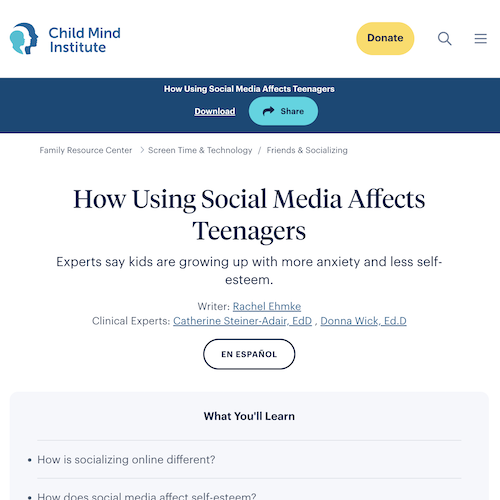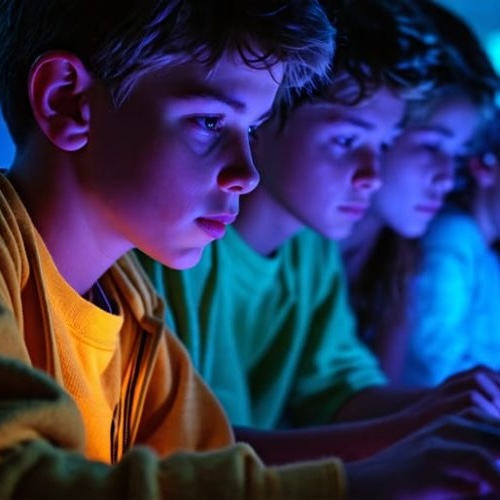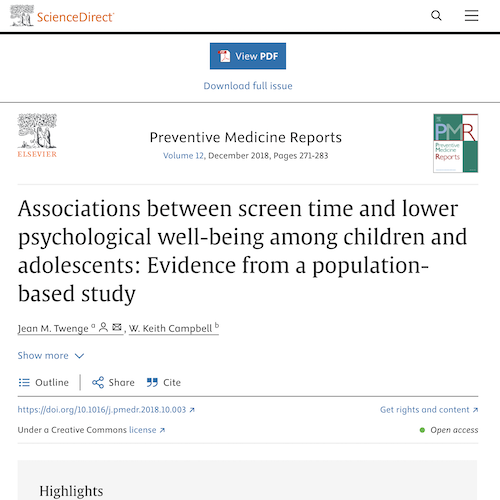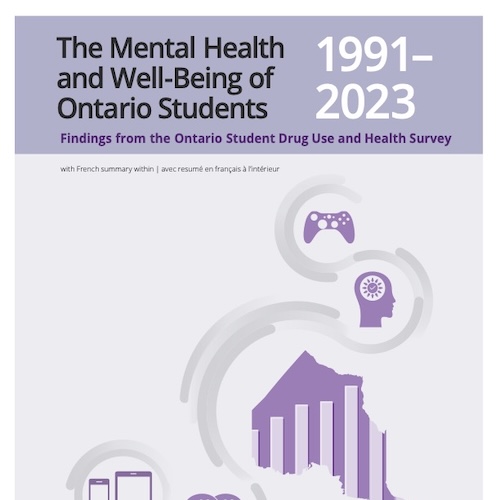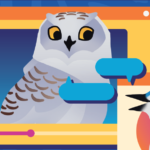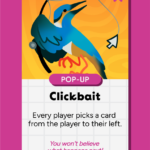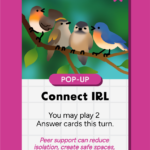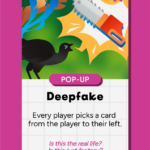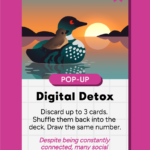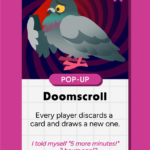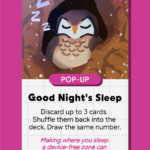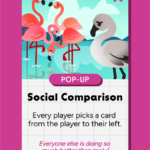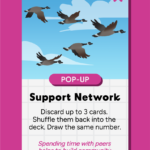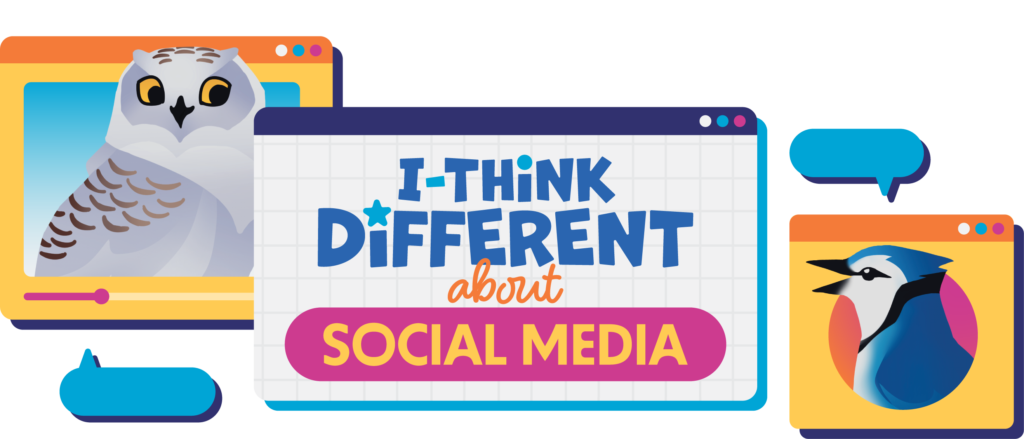
Pedagogy and Story of I-Think
Our Game Design Journey
Thank you students
The spark for this game was a 6 minute conversation with the question:
How might we engage students in real-world problem solving on the use of social media?
Could it be… what if it were… Any chance we could make… A board game inspired by the Real-World Problem Solving Journey?!
We said yes and worked with over 150 students to bring it to life. So, how do you build a game?

A Student Leadership Day
We were under no illusions about the many years that have passed between our middle school years and now. We knew that to make the content of the game meaningful to students, they had to create it.
150 students from every high school in the Waterloo Catholic District School Board joined us for a Student Leadership Day to create the content of the game. We split the day into two parts:
Learning About Social Media and Its Impacts | Students read articles, named what they found most interesting and relevant to them from the research and shared the learning with their peers. 1. We used this information to inform what themes and facts to include in the game.
(After all, it is an educational game! There has to be learning!)
Doing a Pro-Pro
Students used the Pro-Pro framework from the Real-World Problem Solving Journey to write the benefits of different ways to engage with social media from different perspectives. We took pictures of all their work, and teachers walked around recording unique answers from different groups.
These benefits are what make up the Search and Answer cards.
(Once we had the Search and Answer cards drafted, we shared them with students to get their feedback.)

A lesson on game design
We started the journey with a trip to Snakes and Lattes to play! We interviewed their staff about what makes good game play and reflected on our own experiences of belonging, winning and teamwork through multiple games.
Cy also shared with us this website to help us understand the many, many, many, many mechanisms games use to be games. We had so much choice.
Optional Resources
Help your students get the most out of every gameplay.
In this pre-gameplay activity, students explore how their own thoughts and feelings and the thoughts and feelings of the people around them can affect the choices they make. They will practice active listening, paraphrasing, and hearing diverse perspectives.
Through talking, sharing stories, and thinking deeply, they’ll learn what’s important to them and how to make balanced choices that support their well-being.
Instructions
- Students form two circles: the inner circle faces out, the outer circle faces in
- Display and read a prompt aloud
- Inner circle responds first
- Outer circle paraphrases and adds their own response
- Rotate outer circle 3–4 people to the right
- Repeat using the same prompt
- Outer circle responds, and inner circle paraphrases
Use any number of the following prompts:
- When I see adults scrolling on social media I think…
- What helps me focus is…
- I feel most confident when…
- When I play or hang out with my friends I learn…
- When I think of social media I think of…

Previewing these terms found in the game can build background knowledge, boost student confidence, and turn gameplay into a deeper learning experience.
| Word | Part of speech | Definition for Grade 5 | Definition for Grade 7 | Definition for Grade 10 |
|---|---|---|---|---|
| Brain development | noun | As you grow, your brain changes too, helping you think, learn, and make choices in new ways. | The process of how the brain grows, builds connections, and becomes more capable of complex thinking and decision-making. | The biological and cognitive growth of the brain over time, influencing intellectual abilities, emotional regulation, and decision-making processes. |
| Clickbait | noun | A sneaky title, post, or picture online made to get you to click, that isn’t what it seems. | A misleading or sensational online title, post, or image designed to grab attention and trick people into clicking. | Deceptive or sensationalized online content designed to attract attention and encourage clicks, often at the expense of accuracy or substance. |
| Deepfake | noun | A fake video, picture, or recording made with computers to seem real, but in fact isn’t true. | A digitally created video, image, or audio clip that appears real but is actually fake. | A hyper-realistic but fabricated digital video, audio, or image created using artificial intelligence to imitate real people or events. |
| Device | noun | A tool like a phone, tablet, or computer that you can use to go online, use social media, play games, or use apps. Often, devices have screens. | An electronic tool, such as a smartphone, tablet, or computer, used for communication, work, or entertainment. | An electronic instrument, such as a smartphone, tablet, or computer, used for accessing digital content, communication, entertainment, or productivity tools. |
| Digital detox | noun | Taking a break from devices with screens, like phones, games, and social media, for a longer period of time to rest your mind and body. | A planned break from using electronic devices to reduce stress and improve health. | A conscious, intentional period of refraining from using digital devices to promote mental and physical well-being. |
| Direct message (DM) | noun | A private message you send directly to someone on a social media app that no one else can see. | A private form of communication between two users on social media, not visible to the public. | A private form of digital communication between individuals on a social media platform, inaccessible to the public. |
| Domain | noun | The name of a website, like “google.com” or “youtube.com,” that you type to visit it. | The main address of a website, usually written in words, like example.com, so people can find it easily online. | A domain is the unique web address (such as “example.com”) that identifies a specific site on the internet, often representing an organization, business, or topic. |
| Doomscroll | verb | When you keep scrolling through lots and lots of news or social media posts online but you can’t stop and it makes you feel worse. | Continuously scrolling through negative or upsetting posts online, often increasing sadness or anxiety. | The compulsive consumption of distressing online news, leading to heightened feelings of anxiety, sadness, or helplessness. |
| Influencer | noun | A person online who is followed, liked, or trusted by lots of people. Influencers can make others want to buy things, change the way they think, or try new things. | A person who builds a large online following and affects opinions, behaviours, or buying choices. | A person with significant online presence who leverages their platform to influence public opinion, trends, or consumer behaviour. |
| In real life (IRL) | adverb | Used to describe something that happens offline, like meeting your friends face-to-face instead of online. | Refers to events or activities that happen in the physical world, not only online. | Pertaining to activities or interactions occurring in the physical world, distinct from virtual environments. |
| Mindfulness | noun | Good habits that help you calm yourself, like paying close attention to how you are breathing or what you are feeling without getting distracted. | A mental practice of focusing attention on the present moment to reduce stress and improve well-being. | The practice of maintaining focused awareness on the present moment while calmly acknowledging one’s feelings, thoughts, and bodily sensations. |
| Misinformation | noun | Information that is false. People may share misinformation by accident or on purpose. | False or inaccurate information that is spread, often unintentionally. | False or misleading information spread regardless of intent, which can distort public understanding. |
| Offline | adverb, adjective | Not connected to the internet, when you use a device without going on websites or apps or when you are doing activities without a device. | Not connected to the internet; relating to activities done without screens. | Disconnected from the internet; relating to actions occurring without digital interaction. |
| Online | adverb, adjective | Connected to the internet often on a device, where you can visit websites, find information, play games, or talk to people. | Connected to the internet or able to access digital platforms. | Connected to or located on the internet, enabling access to information, services, or social platforms. |
| Ragebait | noun | A social media post that makes people angry on purpose so they comment or share it. | Content designed to provoke anger and increase reactions or shares. | Content deliberately crafted to provoke outrage or emotional responses to manipulate engagement metrics. |
| Scroll | verb | When you move your finger or mouse on a screen to see more social media posts, pictures, or videos. Most social media apps are made so you can scroll forever. | Moving a screen to view more posts, articles, or videos. Many social media apps are designed to scroll and display content endlessly. | Moving through digital content, such as posts, articles, or videos, by navigating on a screen. Many social media platforms are intentionally designed for continuous, infinite scrolling to maximize user engagement. |
| Search engine | noun | A website that helps you find other websites, pictures, or videos when you type in related words. | A tool that lets users search the internet by typing keywords to find websites, images, videos, or information. | A search engine is an online platform that indexes vast amounts of internet content and retrieves relevant websites, documents, and media based on user-entered queries. |
| Sleep hygiene | noun | Good habits that help you fall asleep easily and sleep well, like turning off screens before bed or getting enough exercise. | Healthy habits that support good quality sleep, like limiting screen time before bed. | A set of practices aimed at promoting high-quality, consistent sleep and improving overall health. |
| Social media | noun | Websites or apps where people share posts, pictures, and videos with other people, and talk to friends or followers. | Online platforms where users create, share, and interact with content and other users. | Digital platforms that enable users to create, share, and engage with content and virtual communities. |
| Touch grass | verb | When you take a break from screens and go outside in nature. | A slang expression meaning to go outside and enjoy nature after spending too much time online. | A colloquial expression referring to the practice of disengaging from digital spaces and reconnecting with the physical world for mental well-being. |
| User | noun | Someone who uses a website, app, or device to do things like play games, learn, or talk to friends. | A role in a system where a person interacts with software, websites, or apps to access services, information, or tools. | In software and digital systems, a user is any entity (usually a person) that interacts with a program, service, or platform, often requiring an account or specific permissions to perform actions within the system. |
At Student Leadership Day, 150 high school students learned about social media and its impacts. These are five ideas that stood out to them.
Take a look at these 5 helpful articles on adolescent brain development for extra background in your conversations with your students.

In this post-gameplay activity, students explore how their own thoughts and feelings and the thoughts and feelings of the people around them can affect the choices they make. They will practice active listening, paraphrasing, and hearing diverse perspectives.
Through talking, sharing stories, and thinking deeply, they’ll learn what’s important to them and how to make balanced choices that support their well-being.
Instructions
Students form two circles: the inner circle faces out, the outer circle faces in
- Display and read a prompt aloud
- Inner circle responds first
- Outer circle paraphrases and adds their own response
- Rotate outer circle 3–4 people to the right
- Repeat using the same prompt
- Outer circle responds, and inner circle paraphrases
Use any number of the following prompts:
- Being present is important because…
- Having a group of people change a habit is hard because…
- It is important to have fun without screens because…
- When I think of social media I think of…
- In 5 years, I hope our relationship with social media is…

Check out the 14 birds featured in this game:

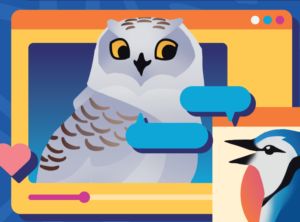
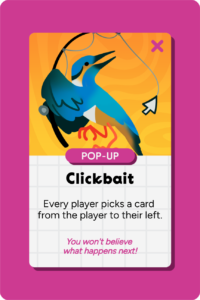
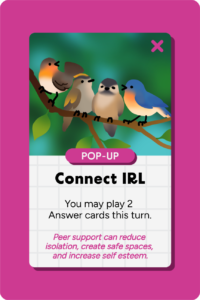
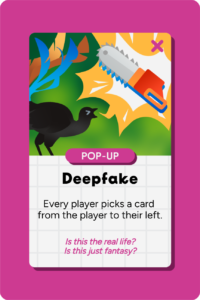

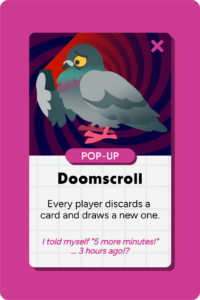
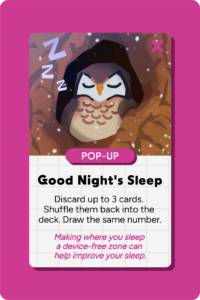
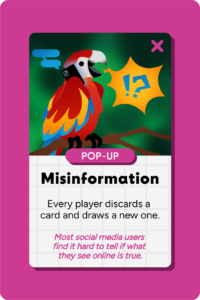

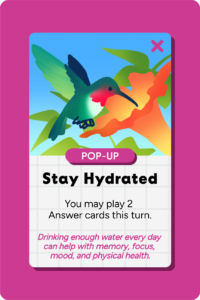
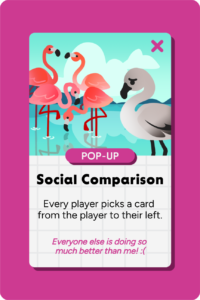
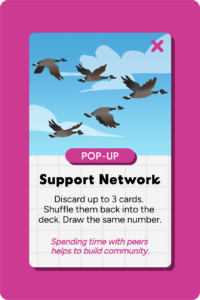
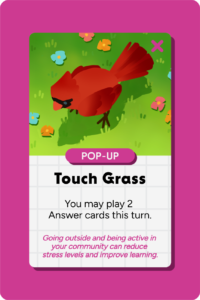
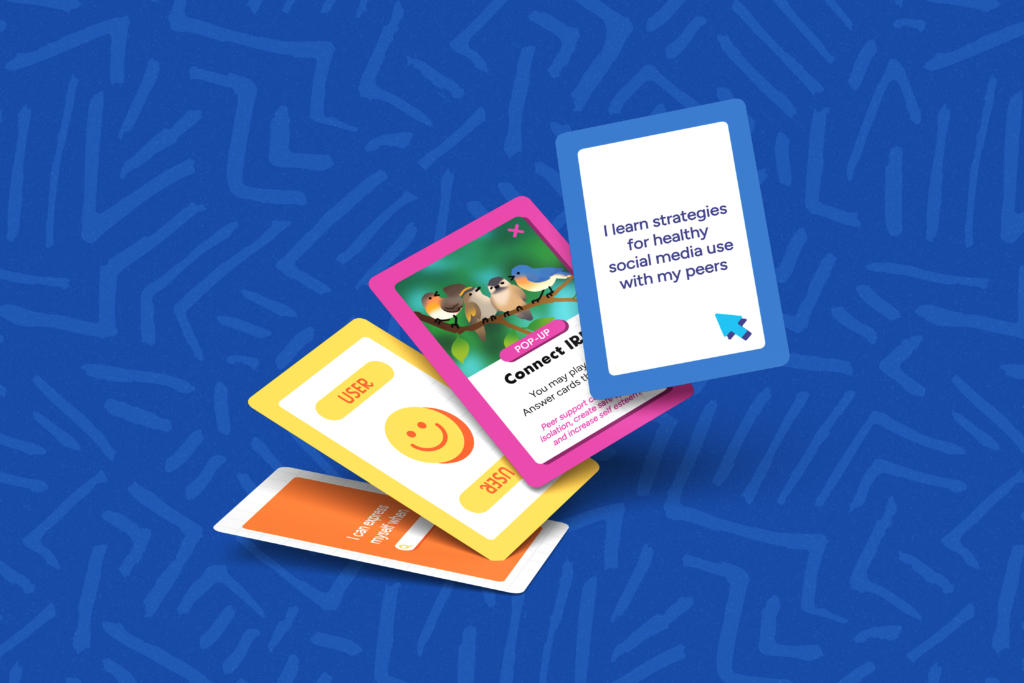
Ready to start playing?
Let’s get your classroom set up and learn the game rules.



